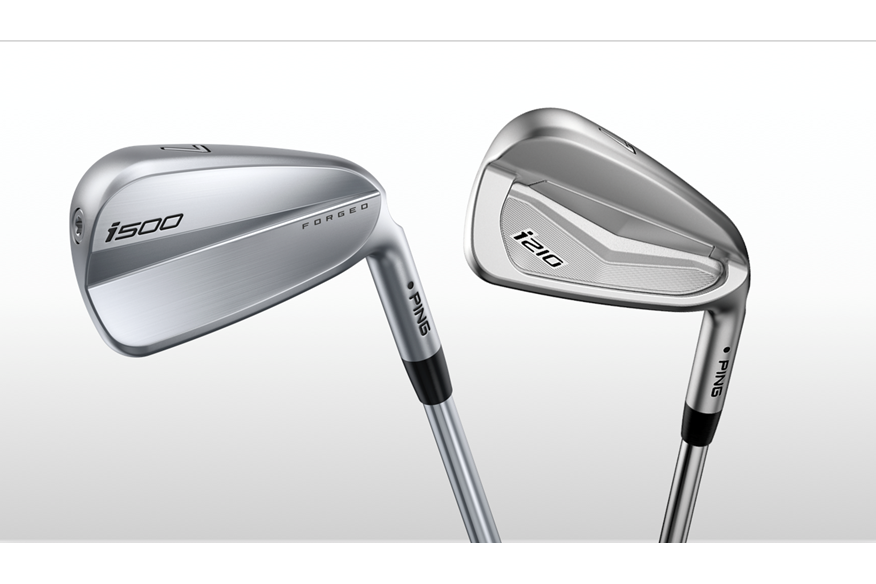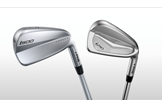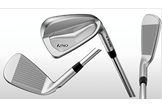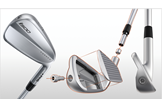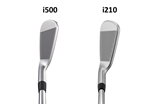Ping introduce new i210 and i500 irons
Last updated:
Ping reveal new high performance i210 and i500 irons, designed for exceptional distance, forgiveness and precision
Gear fans who get their golf news from the internet will know Ping’s new i210 and i500 irons have been one of the worst-kept secrets of the year.
Staff players Tyrrell Hatton and Tony Finau rocked up to the US Open in June with them in their bags. Hatton announced on social media he loved the softer feel and lower ball flight of his new i210s (going on to finish sixth), while Finau had an unnamed forged Ping hollow-body long iron in his bag.
In all fairness to Ping, no details have slipped from their lips about either new iron until the covers were pulled from both at The Open… but we were given both sets weeks before so we could test them first.
REVIEW: i500 Irons
REVIEW: i210 Irons
“Unlike a lot of irons on the market, PING irons are created without sacrificing the performance attributes all golfers need to improve the distance, accuracy and consistency they require from their iron play,” said John K. Solheim, PING President.
“In the i500 and i210, we’re offering two distinctly different technology platforms to give golfers additional choices and fitting options. The i500 delivers unbelievable distance with amazingly high ball flights. In our testing, some golfers gained as much as 15 yards with the i500.
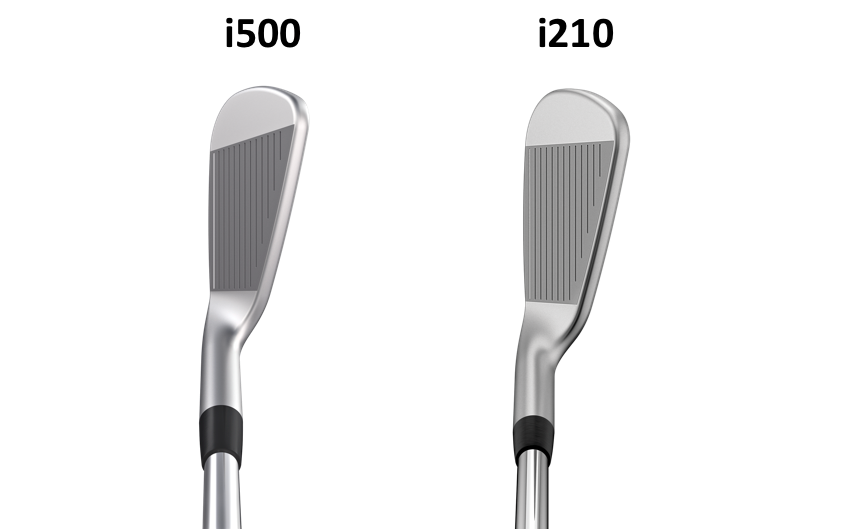
“In the i210 iron, we focused on designing a club that ensures a soft, buttery feel with the distance precision to attack flagsticks. We’re already seeing a lot of our tour players seamlessly transition into the i210 iron, including Brandon Stone who shot 60 yesterday to win the Aberdeen Standard Investments Scottish Open with the 3, 4 and 5 irons in his bag.”
Inside Ping’s i500 irons
What started as a trickle of hollow body irons when PXG launched their first in 2014 has turned into a full-on flood for 2018. TaylorMade drew the battle lines when they joined the hollow body party in August 2017 with the P790s. Then it was Titleist’s turn with the 718 AP3, before Ping entered the ring with the G700 in January 2018.
But where G700 is aimed firmly at the distance/game improvement market, the i500 is very much a player’s distance iron.Why? There’s a hollow body construction, which increases forgiveness and playability, and a forged face, but no mention of tungsten weighting or internal foam to dampen vibration (like its rivals from TaylorMade and Titleist).
“With the forged, maraging-steel face and metal-wood-like construction of the internal cavity, we’re seeing five times the face flexing,” Solheim said. “Golfers are experiencing significant ball-speed gains, which translates to more distance and a higher overall ball flight so the ball holds the green.
“The trajectory is unlike anything we’ve seen in an iron its size. They can expect to hit one less club into the green when properly fit for the new i500 iron. They’ll be amazed at the power and performance engineered into an iron this size. On top of that, it has a blade-style look at address with less offset, which a lot of golfers prefer.”
What you need to know about the i500 irons
What is it?
A players’ distance iron, with a compact head size similar to Ping’s i200. Hosel offset is the same as the iBlade, but with similar amounts of face flex as the G700 – a potent combination for tons of reasonable ball-strikers.
Face flex
By using the same forged maraging C300 face in the G400 fairways and hybrids (it’s three times stronger than the 431 stainless steel in the i200) Ping say the i500 has five times more face flex than the i200.
Logic defying
The face isn’t the only part of the i500 that flexes at impact. The top rail does, too. It allows Ping’s engineers to add stronger lofts to maximise distance, but also deliver a high, towering ball flight for an iron of this size.
They’re VERY premium
The forged faces and grooves are precision milled, ensuring shot making consistency from all lies. Ping says a new hydropearl 2.0 finish scuffs less and is better at cutting moisture between ball and grass to help eliminate fliers.
READ our full review on Ping’s i500 irons – we tested them against Ping’s other better player irons
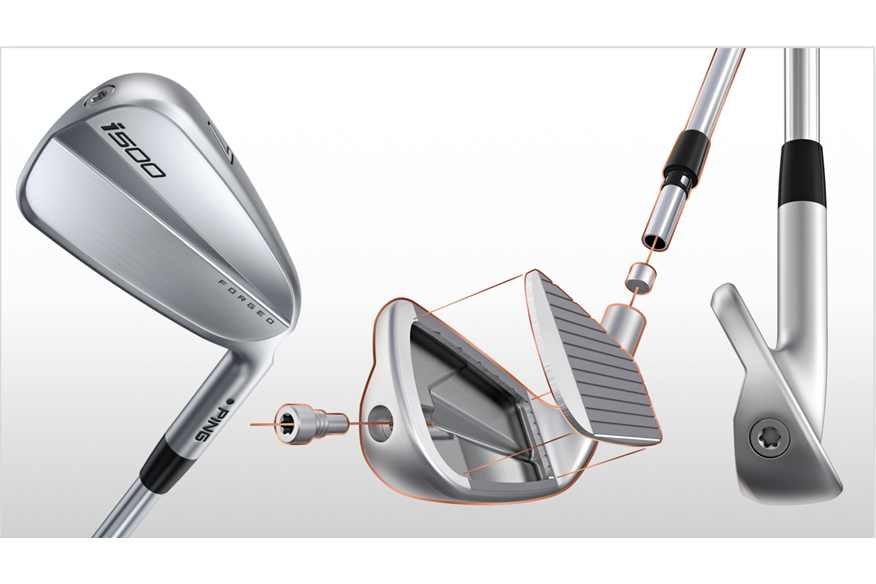
Inside the Ping i210 irons
Many golfers reckon more iron distance is great, but believe it or not there are players out there that aren’t sold on it. Some just want to stick to what they’ve always known and rely on better distance control and accuracy with their irons to make their score. Ping’s i200s, which are now two years old, have been massively popular with decent players and tour players alike. In fact they’re by far Ping’s most played iron on tour. So it goes without saying i210 is much more an update than a revolution, like the i500.
PING’s engineers put a premium on the feel and precision of the i210’s by leveraging a patented multi-material construction that combines a 431 stainless steel head with a larger and softer elastomer insert. The additional volume of the custom tuning port, which also increases perimeter weighting and provides swingweight fine tuning, allows for a 30% larger insert and creates 25% more face contact, resulting in activation of the elastomer to produce a soft and pleasing feel.
“The soft feel of the i210 irons is unlike any we’ve ever offered,” said Solheim. “We know players who rely on precise iron play also require exceptional feel to control their ball flight and trajectories. The improvements to the tuning port and elastomer insert along with the exacting, refined details of the i210 iron offer a new level of performance for this style of iron.”
The i210 iron’s face and grooves are precision milled as is the cavity, giving it a high-end appearance. Tighter groove spacing in the pitching wedge and U-wedge provides greater precision and helps prevent fliers on shots where control matters most, while a new hydropearl chrome 2.0 finish repels water in a bid to greatly improve consistency from the rough and wet conditions.
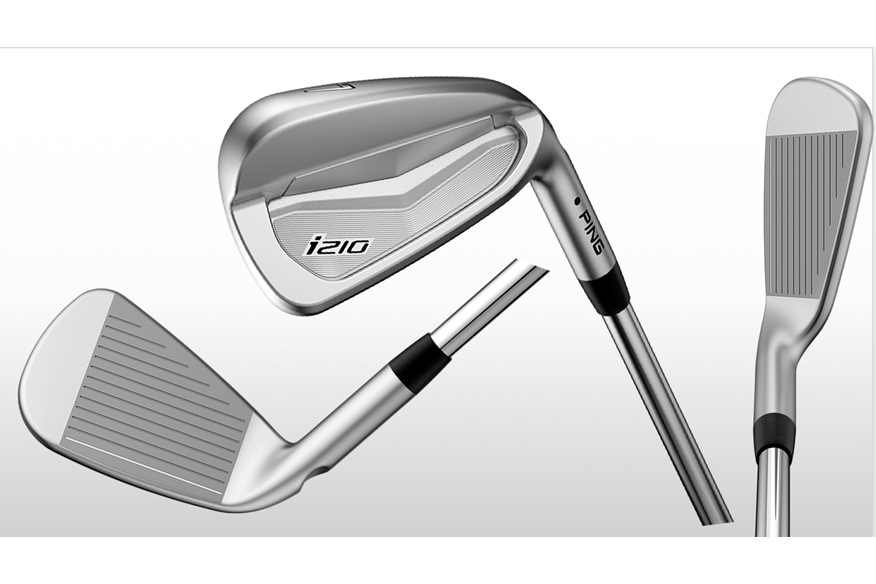
What you need to know about the Ping i210 irons
More elastomer
30% more elastomer than the i200s helps support the face at impact, but the real win is how the elastomer is 50% softer, which increases feel and feedback.
Immaculate head profiles
Ping say they’ve tweaked and nudged the i210’s profile to give a sharper radius on its edges and cleaner straighter lines for a really crisp appearance. Expect more forgiving shapes in the long irons and a muscleback look in the scoring clubs.
CNC milled cavity
It’s not just the face and grooves that are CNC milled on the i210 – the cavity is, too. It means the face thickness can be controlled very carefully for extremely consistent and reliable shot making.
Tighter groove spacing
No stone has been left unturned in the search for performance. The face grooves are more tightly spaced, and each has a sharper top radius to generate more friction between ball and clubface. It all adds up to getting 15-30% more groove on the ball.
